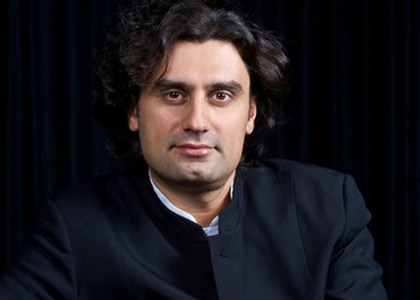> [Archived] Interviews

Interview with conductor Mihnea Ignat
Friday, on the stage of the Radio Hall, there will be a concert by the National Radio Orchestra, conducted by MihneaIgnat. More about the rehearsals, the program and the importance of the Neapolitan school for classicism in the interview below:
How arerehearsals so far?
We had a small incident at the departure from Cluj-it had a very long delay on Monday-unfortunately, we had to cancel the rehearsal planned for Monday afternoon, but we managed very well. Yesterday we had a productive rehearsal, today-an even more productive one. I think that if we maintain this rhythm, the concert will be great.
The overtures are usually the ones that capture the attention of the public. Is that the reason why you chose this program?
There were multiple suggestions. I studied a lot alongside the board of the National Radio Orchestra. In the end, we came to this version that, I think, it's a fortunate one because it is a repertoire that, for the most part, isn't specific to the National Radio Orchestra, who normally plays symphonic music. Even if it is symphonic music, there are still pieces…some, which they usually play( for example, the overture to "Force of destiny" or to "Leonora III"-Beethoven, including Mozart's overtures to "Don Giovanni" and to "The marriage of Figaro"), but there are some others, I'm not sure if it's their first time hearing them, but many orchestra members told me that they've never played them before ( for example, Donizetti- "La Favorita" and the overture to "Barber of Seville").
This entire concert is designed around a red thread, and that red thread is the idea of presenting to the public overtures of plays whose theme or action takes place in Seville. We must remember that Seville, starting with the beginning of the 15th century, when America was discovered, became sort of a present-day New York, a city of great wealth. And, basically, at the time, it was the promised land for everyone. Until late, towards the end of the 18th century, Seville is mentioned in more than 300 pieces.
Of course, we're talking about a sort of effervescence at all levels-at a cultural level as well as mix of civilizations and nations, of different cultures and religions-all that, supported by an amazing economic potential, given the trade with West Indies…basically, all of the ships were unloaded in Seville, which made it a city of endless possibilities at the time.
So, you wanted a journey into time a space.
Yes, it is a journey. We began with the Neapolitan school, with Giovanni Paisiello-an unknown composer, but who, as we are about to see, is the precursor of composers such as Mozart or Haydn with regards to opera music as well as music in general. The Neapolitan school is a great mystery to us, but, actually, it is the source of the classical music that we know today. When we say the first school we talk about the school of Viena-Haydn, Mozart, Beethoven-but, actually, all of these composers are rooted in this Neapolitan school. The "San Carlo" theater in Naples was the biggest theater in the world in the 17th century up until the apparition of the Paris Opera; it was the musical center of the planet. It is not a coincidence that Naples depended upon the Spanish Crown at the time…that's just another parallel.
So, we've got Paisiello, Mozart-"The marriage of Figaro" , " Don Giovanni", and after that we have " La Favorita" by Donizetti, then, there is, of course, "Force of destiny"," Leonora III", with the overture of the opera "Fidelio" by Beethoven, that even us, musicians, overlook…overtures of operas that take place in Seville, "Fidelio" always eludes us. And then, selections of the two suites of "Carmen" by Bizet. And we'll end with a surprise, an intermedio from a Spanish zarzuela, that I think will delight the public.
Translated by Ioana Busuioc,
University of Bucharest, Faculty of Foreign Languages and Literatures, MTTLC, year II
Corrected by Silvia Petrescu














